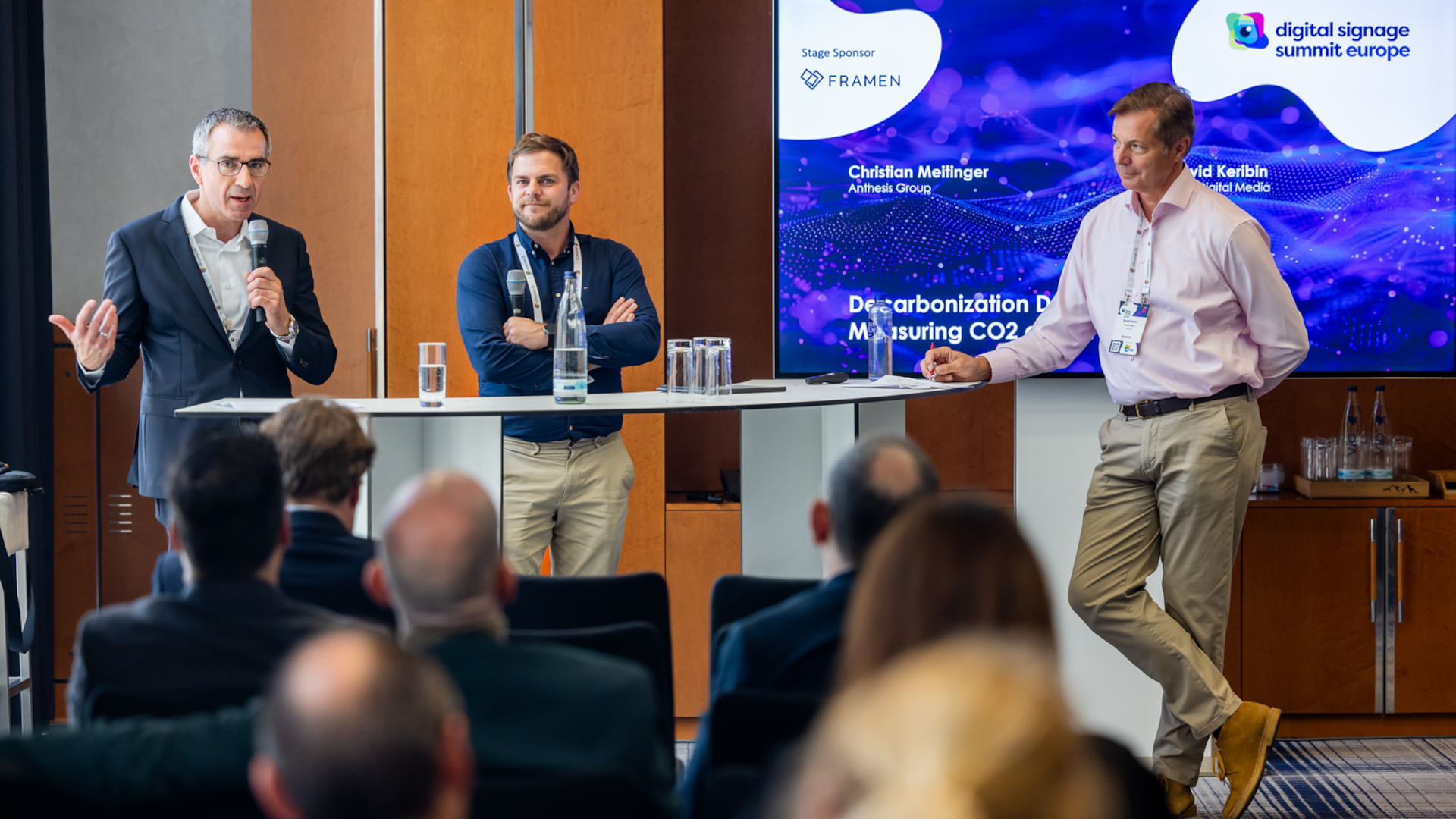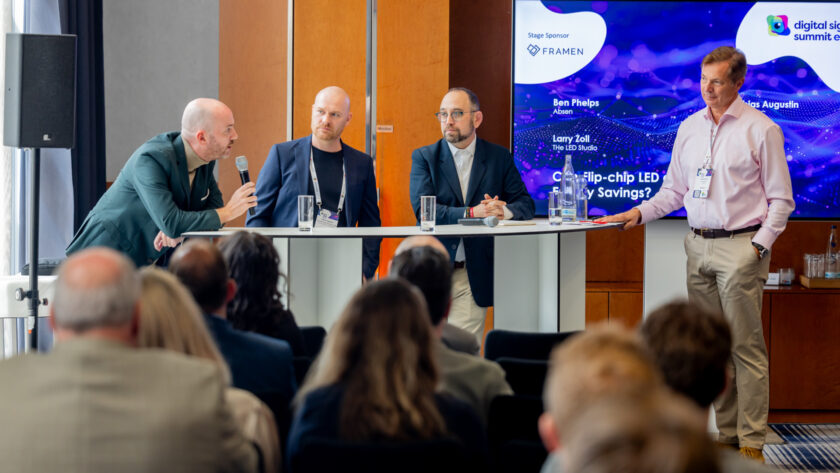Lively discussions, sustainable insights: A successful first Green Signage stage on DSS Europe 2024 creates appetite for more.

DSS Europe 2024: Green Signage On the Agenda
Green Signage had its own stage for the first time at the recent DSS Europe 2024, a sign of its growing importance, but also a consequence of the fact that there is a lot to talk about. For five hours, four different panels discussed, reflected, and made suggestions on how to advance this topic in the near future.
Overall, we were very pleased with both the number of participants and the quality of the discussions.
Green Signage is about transformation
The opening presentation on the invidis Sustainability Framework contained one of our key messages: That Green Signage is not about reporting your progress, it is about transforming your business to be more sustainable, clarifying that the demands of regulators and the customer base should not be seen as a burden, but as an opportunity to become a better and more profitable company.
Discussions in the first panel centered on how to increase collaboration between different parts of the value chain. “Our industry efforts are currently at 0.5 out of 10,” exaggerated Joe Cotugno of Broadsign intentionally. Individually, different players in the value chain are making progress, but there is little interaction to break down existing silos.
But we will see a change in activity in the near future when companies have to start reporting in line with the new CSRD directive and improvements along the value chain need to be assessed and improved.
How to measure CO2
An eye-opener for many was the second session, which considered how to drive decarbonization and what tools are available to reach a lower carbon footprint. Sustainability expert Christian Meitinger explained how his team is approaching decarbonization, but also emphasized that carbon offsetting is a quick and accepted way to get started.
But it all starts with measuring the status quo. David Keribin from Club Digital explained how French industry is using their own carbon calculator to use status quo data to drive improvements or participate in tenders where this transparency is required.
The role of hardware technology
Energy-saving LED technologies were the focus of the third panel. A lively discussion ensued, with the panelists clearly agreeing that low-power LED technologies such as flip-chip will be part of a premium offering, while more power-hungry products based on SMD chips will be seen at the lower end of the market. With LED expected to take more market share from LCD displays in the coming years, this issue should remain on the radar for many companies.

Hardware longevity was the topic of the final panel. Other industries, such as cell phones or PCs, have well-established second-tier markets. The digital signage industry, however, still suffers from the lack of a standard for assessing end-of-life residual value. The panel was optimistic that the growing importance of the industry and the entry of integrators with IT backgrounds will lead to change. The buzzword “managed services”, where the digital signage offering is just a combined offering, will drive the development of new business models and accountable progress, the panel concluded.
More Green Signage to come
Prior to the event, I was a bit apprehensive about starting the Green Signage stage, given the stiff competition for interesting topics in the other rooms. However, we had a well-attended room and very thoughtful discussions, which makes me want to do more next year.
During the coming months, I will elaborate some of the key findings of the DSSE Green Signage sessions. Come back here for more insights!
About the Author
Daniel Oelker is the Green Signage expert of invidis. The invidis impact partner and former Zetadisplay CCO analyses the industry regarding its sustainability impact and writes regularly about the advancements on invidis.com
